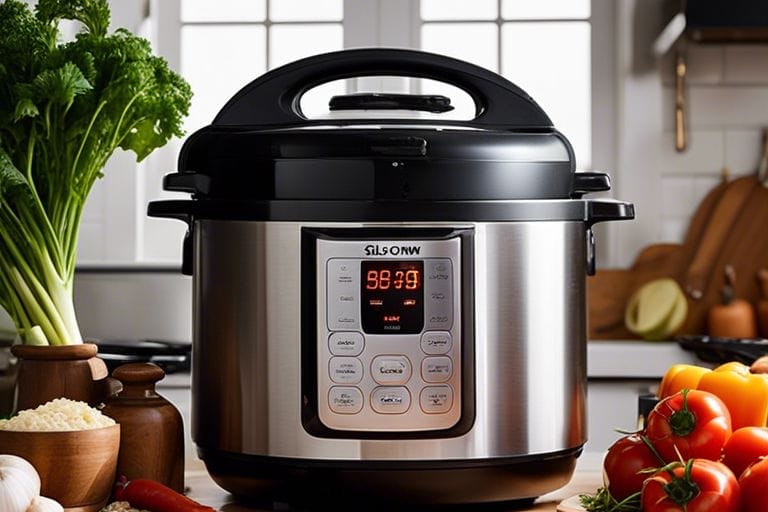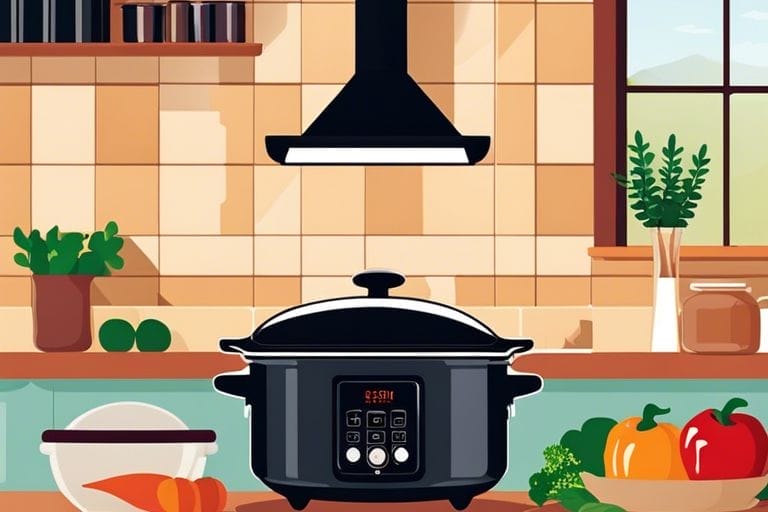Engaging in slow cooking can be a convenient and delicious way to prepare meals, but there are important safety factors to consider when using this method of cooking. While slow cooking can provide tender and flavorful results, it’s crucial to understand the potential dangers and how to mitigate them. In this informative blog post, you will learn about the safety precautions you should take when slow cooking to ensure that your meals are not only delicious but also safe to eat. By following these tips, you can confidently use your slow cooker to create mouthwatering dishes without compromising on safety.
Key Takeaways:
- Slow cooking can be safe when done correctly: When following proper food safety guidelines and using the appliance as intended, slow cooking can provide safe and delicious meals.
- Use the right cuts of meat: When slow cooking, it’s important to use cuts of meat that are suitable for prolonged cooking times to ensure they reach a safe internal temperature.
- Handle leftovers carefully: Properly store and reheat leftovers to ensure they remain safe to eat after slow cooking.

Understanding Slow Cooking
The slow cooker, also known as a crockpot, is a convenient appliance for creating delicious, home-cooked meals with minimal effort. You may have heard some concerns about the safety of slow cooking, but the truth is that when used properly, slow cookers are a safe and reliable way to prepare meals. If you’re concerned about the safety of slow cooking, you can find more information at Is there any danger to letting food cook in a slow cooker for a very long time?
How Slow Cookers Work
Slow cookers work by cooking food at a low temperature for an extended period, allowing flavors to develop and meat to become tender. The slow cooking process does not expose food to high temperatures, which means it can take longer for bacteria to be destroyed. However, when you follow food safety guidelines, slow cooking can be a safe method for preparing meals.
Temperature Control and Food Safety
When it comes to temperature control and food safety in slow cookers, it’s important to understand how heat distribution and control affect the safety of your meals. Here’s a breakdown of some key points:
Temperature Control and Food Safety
| Important Points | Details |
| Temperature range | The slow cooker maintains a low and consistent temperature, typically between 170°F and 280°F. |
| Dangerous temperature zone | Foods should not be kept between 40°F and 140°F for more than 2 hours, as this is the “danger zone” where bacteria can multiply rapidly. |
| Safe cooking times | It’s important to follow recommended cooking times for different types of food to ensure they reach safe internal temperatures. |
| Proper handling of leftovers | Leftover food should be refrigerated within 2 hours of cooking to prevent bacterial growth. |
Safe Slow Cooking Practices
Obviously, using a slow cooker can be a convenient and delicious way to prepare meals. However, it is important to follow safe practices to ensure that your meals are not only tasty but also safe to eat. Here are some tips to keep in mind for safe slow cooking.
The Importance of Thawing Meat
When using your slow cooker, it’s important to always thaw your meat before placing it in the cooker. Do not place frozen meat directly into the slow cooker, as this can result in the meat being in the “danger zone,” between 40°F and 140°F, for an extended period of time. This can lead to bacteria growth and potential foodborne illness. To thaw meat safely, you can place it in the refrigerator overnight or use the defrost setting on your microwave. By properly thawing your meat, you can ensure that it cooks evenly and safely in the slow cooker.
Proper Layering and Portioning
When preparing your ingredients for the slow cooker, it’s important to layer them in the correct order and to portion them appropriately. Start by placing vegetables at the bottom of the slow cooker, followed by the meat, and then any grains or legumes. This layering method helps to ensure that all ingredients cook evenly. Additionally, it’s important to not overfill your slow cooker. You should only fill it between half and two-thirds full, as overfilling can cause the food to cook at an unsafe temperature and may lead to foodborne illness. By properly layering and portioning your ingredients, you can ensure that your slow-cooked meals are both safe and delicious.
Enhancing Slow Cooker Meal Safety
To ensure that your slow cooker meals are not only delicious but also safe, there are a few additional steps you can take. For a comprehensive list of safety tips, you can refer to The Slow Cooker Safety Tips You Need to Know. Here are some key tips to enhance the safety of your slow cooker meals.
Choosing the Right Ingredients
When preparing meals for your slow cooker, it’s important to select the right ingredients. Be sure to use fresh, high-quality ingredients that are suitable for slow cooking. Avoid using ingredients that are past their prime or spoiled, as they can pose a food safety risk. Additionally, always follow safe food handling practices when preparing your ingredients, such as washing produce and properly storing perishable items.
Maintenance and Care of Your Slow Cooker
Proper maintenance and care of your slow cooker are essential for ensuring its safety and longevity. Before each use, carefully inspect your slow cooker for any signs of damage or wear. Ensure that the electrical cord and plug are in good condition, and always place your slow cooker on a stable, heat-resistant surface. Regularly clean your slow cooker according to the manufacturer’s instructions to prevent the buildup of harmful bacteria. By taking these precautions, you can ensure that your slow cooker remains a safe and reliable kitchen appliance.
Maximizing Flavor and Nutrition
Not only does slow cooking make your meals tender and flavorful, but it also helps retain the nutrients in your food. When done right, slow cooking can result in a nutritious and delicious meal for you and your family to enjoy.
The Art of Seasoning in Slow Cooking
When it comes to slow cooking, seasoning is key to maximizing flavor. Since slow cooking allows the flavors to meld together over a longer period, it’s important to season your ingredients well before adding them to the pot. This will help enhance the overall taste of your meal and create a more satisfying dish for you to enjoy. Experiment with different herbs and spices to find the perfect combination for your slow-cooked meals.
Tips for Preserving Nutrients in Slow-Cooked Meals
When slow cooking, there are several ways to preserve the nutrients in your food. One tip is to use fresh ingredients whenever possible, as they tend to retain more nutrients than their frozen or canned counterparts. Additionally, cutting your ingredients into larger chunks or leaving the skin on fruits and vegetables can help retain their nutritional value. You can also minimize the loss of nutrients by adding delicate ingredients like herbs and leafy greens towards the end of the cooking process. The use of broths or sauces can also help keep your food moist and flavorful, while retaining essential nutrients.
- Use fresh ingredients whenever possible
- Cut ingredients into larger chunks or leave the skin on fruits and vegetables
- Add delicate ingredients towards the end of the cooking process
- Use broths or sauces to keep food moist and flavorful
The key is to be mindful of how you prepare and cook your ingredients to ensure you’re getting the most out of your slow-cooked meals. The more you prioritize preserving the nutrients in your food, the more nutritious your meals will be.

Conclusion: Is Slow Cooking Safe? Tips for Safe, Delicious Meals
With these considerations in mind, you can be confident in using your slow cooker to create safe and delicious meals. By carefully choosing your ingredients, properly handling and storing your food, and following the recommended cooking times and temperatures, you can avoid the risks associated with slow cooking. Remember to always thaw frozen ingredients before adding them to your slow cooker and ensure that your cooker reaches the appropriate temperature to fully cook your food. By staying mindful of these tips, you can enjoy the convenience and flavors of slow cooking without compromising the safety of your meals. Happy cooking!
FAQ
Q: Is slow cooking safe?
A: Yes, slow cooking is generally safe when done correctly. It’s important to follow food safety guidelines and ensure that your slow cooker reaches a safe cooking temperature to prevent foodborne illness.
Q: What are some tips for safe slow cooking?
A: To ensure safe, delicious meals when using a slow cooker, it’s important to always thaw frozen ingredients before adding them to the slow cooker, use a food thermometer to check that meats reach the proper internal temperature, and avoid lifting the lid during the cooking process to maintain a consistent temperature.
Q: Are there any specific safety precautions to keep in mind when using a slow cooker?
A: When using a slow cooker, it’s important to handle food with care to prevent cross-contamination, follow recommended cooking times and temperature settings provided in recipes, and store leftovers promptly and properly to prevent foodborne illness. Additionally, make sure to properly clean and maintain your slow cooker to prevent the growth of harmful bacteria.

